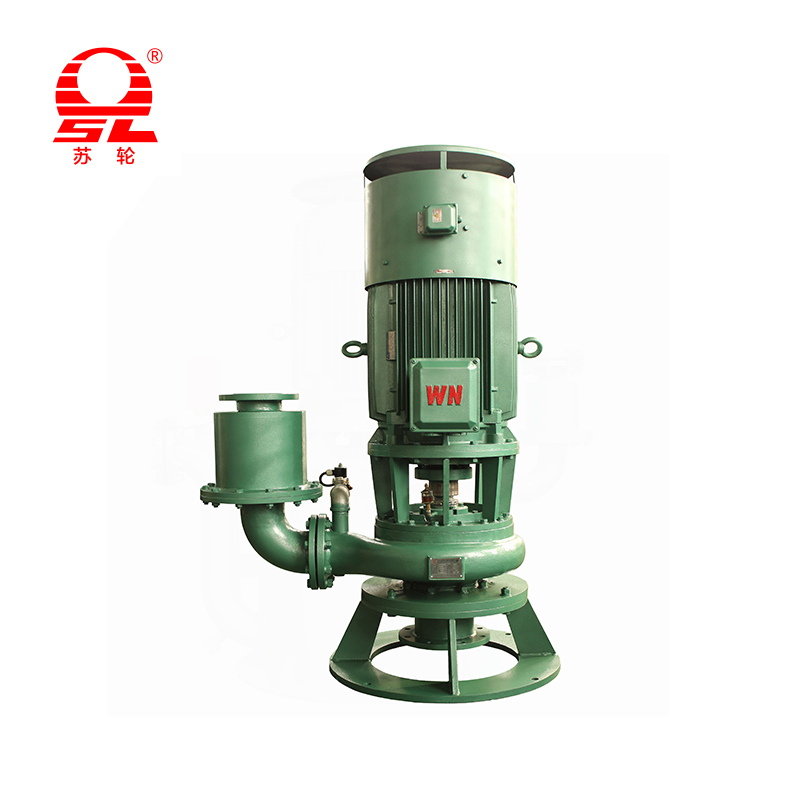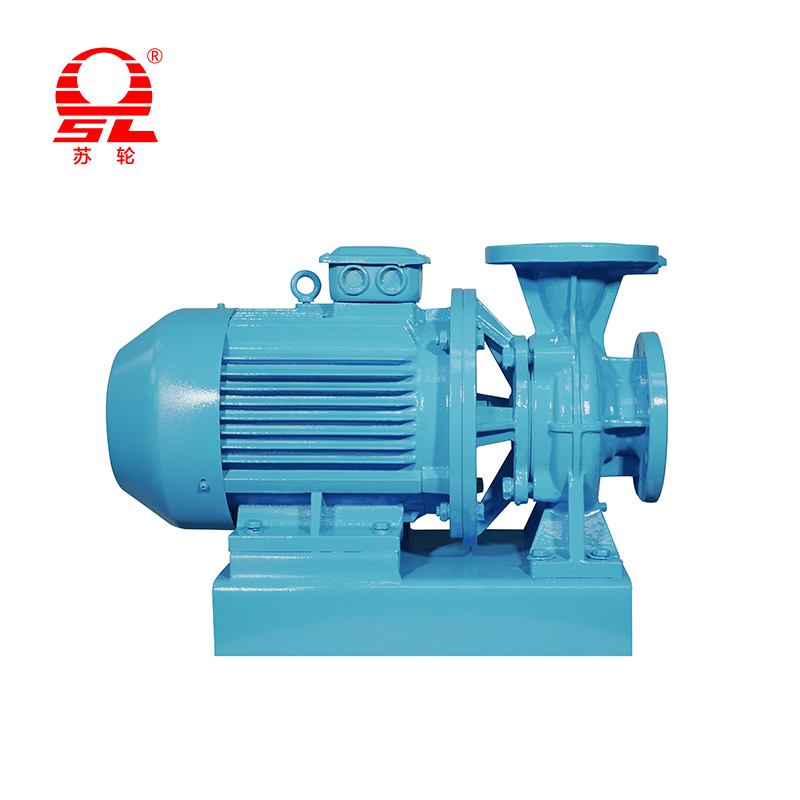What is the main source of axial force in a horizontal centrifugal pump
 2025.09.30
2025.09.30
 Industry News
Industry News
Horizontal centrifugal pumps are the most commonly used fluid transport equipment in industrial processes, and their operational reliability directly impacts production efficiency. In this professional field, axial thrust is a crucial design and operating parameter. Understanding the mechanism of axial thrust generation and how to balance it is crucial for pump selection, installation, troubleshooting, and extending the life of bearings and mechanical seals.
1. Core Source of Axial Force: Pressure Difference Across the Impeller
The fundamental cause of axial force is the imbalance of liquid pressure on both sides of the impeller. This is the primary and often the largest source of axial force.
A single-stage, single-suction impeller is the most typical example. When a centrifugal pump is operating:
On the impeller front shroud side (suction side): The central area of the impeller is a low-pressure zone, with pressure close to or below atmospheric pressure (depending on the NPSH).
Impeller rear shroud side (back): As the liquid flows out of the impeller and into the volute, some of the high-pressure liquid will seep through or flow back through the gaps in the wearing rings to the back of the impeller. Furthermore, the high pressure at the volute outlet also exerts pressure on the back of the impeller. Therefore, the average pressure at the back of the impeller is typically much higher than at the front.
This pressure difference between the front and back of the impeller, projected onto the effective area, creates a reaction force directed toward the suction port—an axial force. The magnitude of this force is directly related to the pump head, impeller diameter, and the wearing ring gap. Higher head increases the pressure difference and, consequently, the axial force.
2. Momentum Change Effect in the Impeller Flow Passage
A second important source of axial force is the momentum change reaction force generated when the fluid changes direction and velocity within the impeller's internal flow passage.
When liquid enters the impeller from the suction port, the flow changes from axial (parallel to the pump axis) to radial (perpendicular to the pump axis). According to Newton's second law, when the fluid undergoes this directional change within the impeller, it inevitably generates a reaction force on the impeller. The component of this reaction force, acting along the pump shaft, constitutes an axial force in the opposite direction.
In most single-suction impeller designs, the direction of this momentum-induced axial force is opposite to the axial force caused by the pressure differential, but its magnitude is typically smaller than the axial force caused by the pressure differential.
3. Influence of Shaft Seals and Balancing Holes: Local Pressure Distribution
The design and operating conditions of the shaft seal area also affect the local axial force distribution.
Mechanical Seal/Stuffing Box Area: At the shaft seal, the force acting on the pump shaft is the combined force of the liquid pressure within the seal chamber and atmospheric pressure. If the pressure within the seal chamber is high, it pushes the shaft outward along the pump shaft.
Balance Holes: For impellers that use balancing holes to balance axial forces, the function of the balancing holes is to effectively reduce the pressure behind the impeller by directing high-pressure liquid at the back of the impeller back to the suction port or low-pressure area. The design of the balancing hole diameter and number directly determines the degree to which the pressure difference between the front and back surfaces of the impeller is eliminated.
4. Double-suction impellers and inherent balance of axial forces
It is worth noting that in double-suction centrifugal pumps, the impellers are designed with bilaterally symmetrical suction.
Symmetrical structure: Liquid enters the center of the impeller simultaneously and symmetrically from both sides.
Mechanical cancellation: This means that the flow path geometry of the two impellers is completely symmetrical, and the pressure distribution on both sides is also essentially symmetrical. During operation, the axial forces generated by the two impellers are equal in magnitude and opposite in direction, theoretically achieving automatic axial force balance. This is one of the key structural advantages of double-suction pumps that enable them to handle high flow conditions.
5. The Importance of Axial Force Balancing and Countermeasures
In centrifugal pump design, eliminating or minimizing residual axial forces is crucial. Otherwise, excessive axial forces can lead to:
Bearing overload: Continuous axial forces place significant loads on the thrust bearing, accelerating wear and failure. This is one of the most common failure modes in centrifugal pumps.
Mechanical seal damage: Sharp changes in axial forces can cause excessive compression or separation between the rotating and stationary rings of the mechanical seal, resulting in leakage or severe wear.
Therefore, in addition to the self-balancing design of double-suction impellers, the following specialized mechanisms are often used in engineering designs to balance axial forces:
Balance holes and back vanes: used in single-suction pumps.
Balance discs/drums: commonly used high-pressure balancing devices in multi-stage pumps.
Precisely controlling the axial forces of horizontal centrifugal pumps and ensuring pump shaft stability are core technical requirements for ensuring long-term, reliable operation of the equipment.

+86-0523- 84351 090 /+86-180 0142 8659

 English
English русский
русский عربى
عربى bahasa Indonesia
bahasa Indonesia










